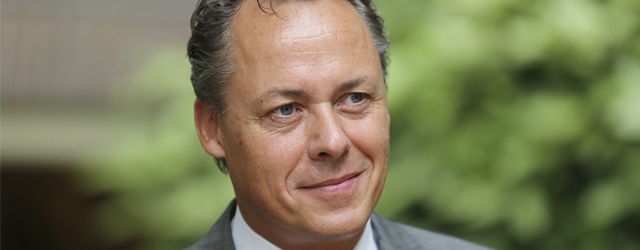ING, long a pioneer in direct banking, is planning for a digital future that chairman and CEO Ralph Hamers says will transform the experience of both retail and wholesale customers.

Global Finance: What are the key factors that have enabled ING to stay ahead of the curve in the shift toward digital banking?
Ralph Hamers: We have a head start. We’ve always pioneered new ways of making banking easier. ING Direct, first launched in 1997, is considered one of the world’s first successful fintechs. So ING has a long history of customer innovation. Today, in for instance Germany, we are servicing nine million customers through our branchless direct banking model.
But it is equally important to build the right culture, one that promotes collaboration and innovation and accepts failure as a way of getting better. Our Think Forward strategy, launched in March 2014, is aimed at delivering a differentiating customer experience. That includes a focus on being leaders in the digital customer experience based on easy, 24/7 access, simple products and services and tools to help customers make sound financial decisions.
GF: How does this feed into ING’s efficiency, growth and profitability?
Hamers: To meet changing customer expectations arising from increasing digitization, we aim to converge to a single platform for financial services that will deliver a uniform customer experience across borders. This will be based on simplified and standardized products and systems supported by modular architecture, integrated and scalable IT systems and shared services.
In the Netherlands we have introduced agile work based on end-to-end, multidisciplinary teams. These teams are focused on delivering customer improvements from design to product delivery at lower cost and with shorter time to market than previously required. We have also introduced targeted operating models to streamline our finance, HR, procurement and risk functions. The good progress we made in 2016 implementing the Think Forward strategy resulted in strong commercial and financial performance.
GF: Looking to the future, what do you see as the main challenges and opportunities for ING?
Hamers: I feel strongly that the bank of the future will not look like banking as we know it today. I see this in particular in the development of digital ecosystems that connect people and businesses. They include features like shopping and paying for goods and services to become the one stop for all of their users’ needs. This trend makes it important for us to also develop an open platform where customers can go not only for their financial needs but also for relevant offers and services from third parties, and even for an overview of their accounts with other financial services providers. This will provide them with an enhanced customer experience and us with opportunities to generate fee and other revenue from services beyond traditional banking.
ING’s digital systems also must be capable of integrating seamlessly so that we are present where our customers spend their time online—available anytime and anywhere. On the wholesale banking side, an open platform is also needed to tap into important developments like blockchain. This distributed ledger technology has the potential to develop into a digital standard between banks, enabling them to offer faster, safer and cheaper services to their clients.
Banks are also confronted with continuous regulatory burdens and a prolonged period of ultra-low interest rates. These factors put pressure on the returns, which are necessary to fund growth and investments and cover our cost of capital. To foster further growth and maintain our standing as a leading European bank, we strive to keep getting better every day. This is why we are accelerating our transformation to create an integrated platform that will benefit our customers and put our business on a solid footing for the future.



